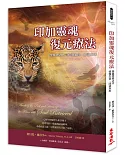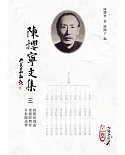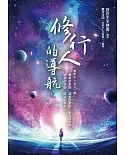In 648 CE, Tang imperial authorities collected every copy of the Writ of the Three Sovereigns (Sanhuang wen) from the four corners of the empire and burned them. The formidable talismans at
its core were said not only to extend their owners’ lifespan and protect against misfortune, but also propel them to stratospheric heights of power, elevating them to the rank of high minister
or even emperor. Only two or three centuries earlier, this controversial text was unknown in most of China with the exception of Jiangnan in the south, where it was regarded as essential local
lore. In the span of a few generations, the Writ of the Three Sovereigns would become the cornerstone of one of the three basic corpora of the Daoist Canon, a pillar of Daoism—and a perceived
threat to the state.
This study, the only book-length treatment of the Writ of the Three Sovereigns in any language, traces the text’s transition from local tradition to empire-wide institutional religion. The
volume begins by painting the social and historical backdrop against which the scripture emerged in early fourth century Jiangnan before turning to its textual history. It reflects on the
work’s centerpiece artifacts, the potent talismans in celestial script, as well as other elements of its heritage, namely alchemical elixirs and “true form” diagrams. During the fifth and sixth
centuries, with Daoism coalescing into a formal organized religion, the Writ of the Three Sovereigns took on a symbolic role as a liturgical token of initiation while retaining its
straightforward language of sovereignty and strong political overtones, which eventually led to its prohibition. The writ endured, however, and later experienced a revival as its influence
spread as far as Japan. Despite its central role in the development of institutional Daoism, the Writ of the Three Sovereigns has remained an understudied topic in Chinese history. Its
fragmentary textual record combined with the esoteric nature of its content have shrouded it in speculation. This volume provides a lucid reconstruction of the text’s hidden history and
enigmatic practices while shedding light on its contributions to the religious landscape of medieval China.
好評推薦
“This is a substantial, satisfying work dedicated to exploring one of the main missing elements in our knowledge of the Daoist Canon in its original formulation. Following a meticulous
account of the origins of Three Sovereigns literature, Dominic Steavu goes on to make the very valid point that talismans, elixirs, and charts―not generally considered part of the transmission
of scriptures in modern scholarship―constituted a nonverbal medium central to this religious tradition. While many readers will derive benefit from this knowledge even if they themselves are
not particularly concerned with medieval Daoism, specialists will be glad to see a gap in our knowledge of early Daoist scriptures filled in such a thoroughly professional manner.”―T. H.
Barrett, emeritus professor, SOAS China Institute





















